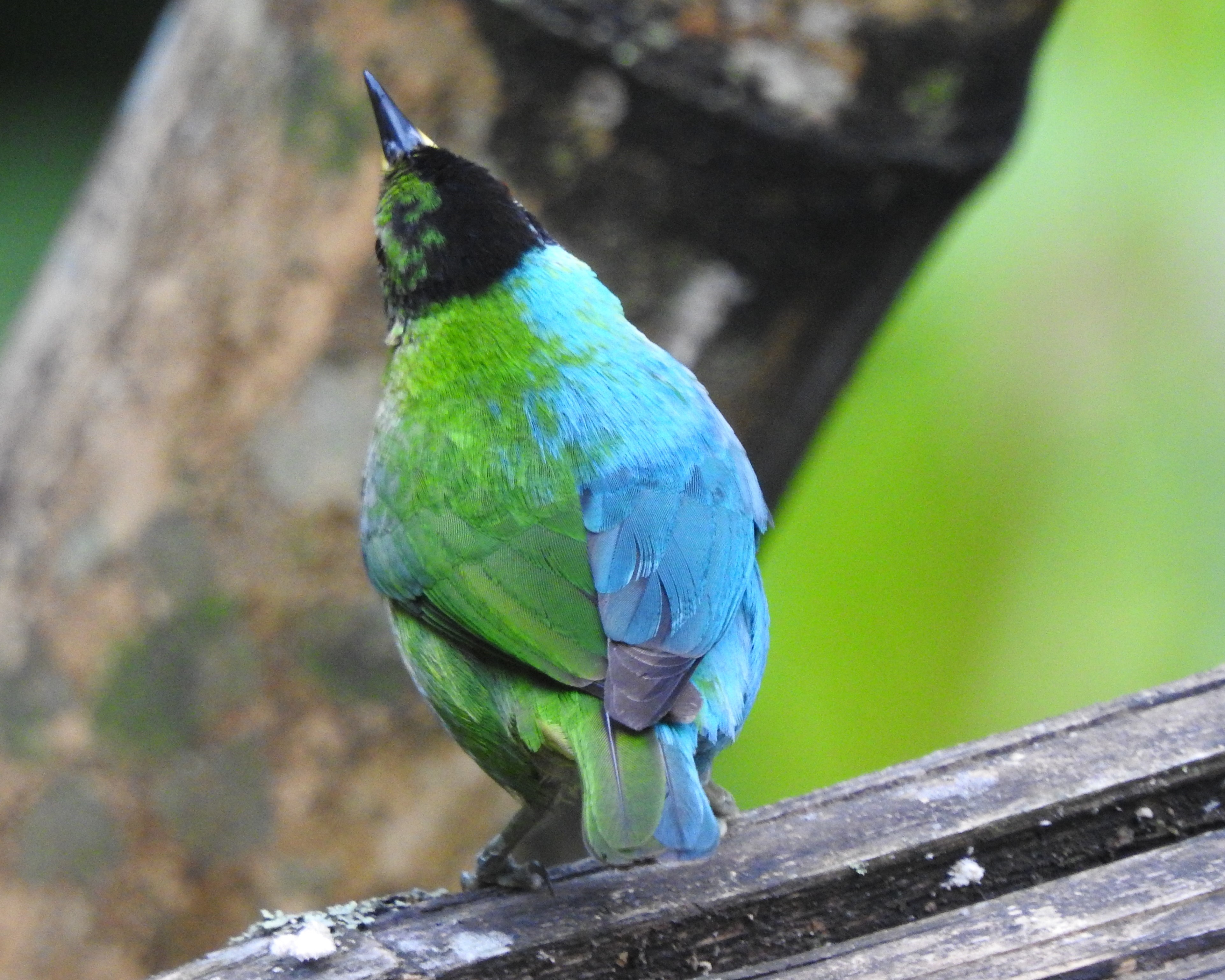Move over, Bowie – there’s a new bilateral gynandromorph in town. In a Colombian forest, zoologists have captured footage of an extremely rare and vividly colored half-green, half-female, half-blue, half-male wild bird.
The bird, a Green Honeycreeper, was spotted by amateur ornithologist John Murillo, who pointed it out to zoologist Professor Hamish Spencer, who happened to be holidaying in Colombia at the time. It’s only the second known observation of a bilateral gynandromorph – an organism with half-female, half-male characteristics split down the midline – in this species in more 100 years.
“Many birdwatchers could go their whole lives and not see a bilateral gynandromorph in any species of bird. The phenomenon is extremely rare in birds,” said Spencer in a statement. “It is very striking, I was very privileged to see it.”
The video and photographs of the bird, which Spencer suggested are “arguably the best of a wild bilateral gynandromorphic bird of any species ever”, show a creature with typical male, blue plumage on its right side and female, green plumage on its left. Both colors are pretty vivid, making the split between the two particularly striking.
Green Honeycreepers are not the only bird species in which this phenomenon has been seen, and it also extends beyond birds into butterflies, bees, and even stick insects. Whilst it’s been documented in many different species, bilateral gynandromorphism is generally thought of as rare.
The authors of the study documenting the observation, including Murillo and Spencer, believe that bilateral gynandromorphism occurs as the result of rare errors before conception and at the point of fertilization. “The phenomenon arises from an error during female cell division to produce an egg, followed by double-fertilization by two sperm,” Spencer explained. It’s thought that double-fertilization could explain why the previous observation of the unusual phenomenon in this bird species had the reverse color pattern.

The rear view of the bird’s unusual color pattern.
Image credit: John Murillo
Despite its unusual appearance, the team didn’t spot anything else out-of-sorts in the Green Honeycreeper. It was present in the forest for at least 21 months, during which time it acted much the same as other wild members of its species. It’s unclear, however, if the bird was fertile or reproduced in this time; the researchers didn’t witness any courtship behavior, and it tended to keep to itself.
Regardless, the team believes the rare observation adds another piece to the puzzle of understanding sex determination in birds. Spencer expressed hope that the discovery would inspire people to “treasure exceptions” and the interesting revelations that they can bring.
“Be always on the lookout for oddities,” the zoologist concluded.
The study is published in the Journal of Field Ornithology.
Source Link: Vivid Colors Of Rare Half-Male, Half-Female Bird Captured In Incredible Footage